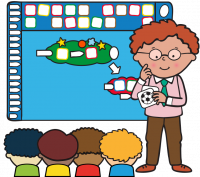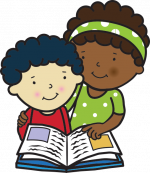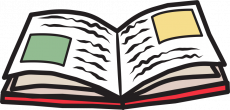Common Mistakes to Avoid When Creating a Year One Literacy Lesson Plan
Creating a Year One literacy lesson plan can be both exciting and challenging. It's essential to strike a balance between providing comprehensive teaching and ensuring children remain engaged and motivated. Common mistakes, such as overloading pupils with information or failing to cater to diverse learning styles, can hinder the effectiveness of your lessons. By understanding and avoiding these pitfalls, you can create a dynamic and effective literacy programme that supports all learners.
Information Overload
One of the most common mistakes in creating a Year One literacy lesson plan is overwhelming pupils with too much information at once. Young learners have limited attention spans and bombarding them with excessive content can lead to confusion and disengagement. It is crucial to present information in small, manageable chunks that pupils can easily digest and understand.
To achieve this, consider breaking down your lessons into clear, focused segments. Each segment should have a specific objective and should not exceed the pupils' cognitive load. Additionally, pacing is key - ensure that there is enough time for children to absorb the material before moving on to the next topic. This approach not only makes the lessons more effective but also helps in maintaining pupils' interest and enthusiasm.
Incorporating Engaging and Interactive Activities
 Engaging and interactive activities are vital in making literacy lessons fun and effective. These activities capture children's attention and make learning a more enjoyable experience. When students are actively involved in the learning process, they are more likely to retain information and develop a positive attitude towards literacy.
Engaging and interactive activities are vital in making literacy lessons fun and effective. These activities capture children's attention and make learning a more enjoyable experience. When students are actively involved in the learning process, they are more likely to retain information and develop a positive attitude towards literacy.
It's crucial to ensure that these activities are inclusive and accessible for all students. Consider the diverse needs of your learners, including those with special educational needs. Activities should be adaptable, allowing for different levels of participation. By providing various options and scaffolding support, you can create an inclusive environment where every child has the opportunity to succeed.
Planning for Varied Teaching Methods
 Catering to different learning styles is essential in creating an effective Year One literacy lesson plan. Every pupil is unique, with their own preferred way of absorbing and processing information. Some children might be visual learners, while others may benefit from auditory or kinaesthetic teaching methods. By incorporating a variety of teaching approaches, you can ensure that all pupils have opportunity to engage with the material in a way that suits them best.
Catering to different learning styles is essential in creating an effective Year One literacy lesson plan. Every pupil is unique, with their own preferred way of absorbing and processing information. Some children might be visual learners, while others may benefit from auditory or kinaesthetic teaching methods. By incorporating a variety of teaching approaches, you can ensure that all pupils have opportunity to engage with the material in a way that suits them best.
There are several teaching methods that can be used to cater to these varying learning styles. For example, visual learners might benefit from the use of colourful charts, diagrams, and videos. Auditory learners may find success through listening to stories, songs, and discussions. Kinaesthetic learners, on the other hand, could engage more effectively through hands-on activities, such as using the Mighty Writer mat and its interactive tiles. By diversifying your teaching methods, you can create a more inclusive and stimulating learning environment.
Regularly Assessing and Adapting Your Lesson Plan
Regularly assessing pupil progress is a fundamental aspect of effective literacy teaching. Continuous assessment provides valuable insights into each child's understanding and helps identify areas where they may be struggling. By keeping a close eye on their progress, you can make informed decisions about how to adjust your lesson plans to better meet their needs.
Adapting your lesson plans based on assessment results is crucial for addressing the individual needs of your pupils. If certain concepts are proving challenging for a majority of the class, consider revisiting these topics using different teaching methods. By being flexible and responsive to assessment data, you can create a more effective and supportive learning environment.
Preparing for Potential Challenges and Backup Plans
Common challenges faced in literacy lessons include managing diverse learning needs, maintaining pupil engagement, and addressing behavioural issues. Teachers often encounter pupils with varying literacy levels, which can make it difficult to design a one-size-fits-all lesson plan. Additionally, keeping young learners focused and motivated throughout the lesson can be a significant challenge, especially if the material is not sufficiently engaging or appropriately paced.
To prepare for and address these challenges, it is essential to have a flexible approach to lesson planning. Start by identifying potential problem areas and think of strategies to mitigate them. Incorporating a mix of activities, such as hands-on tasks, interactive games, and storytelling, can help maintain engagement and cater to different learning styles.
Conclusion
Creating an effective Year One literacy lesson plan requires careful consideration and flexibility. You can foster a supportive and stimulating learning environment by avoiding common mistakes such as overloading children with information, incorporating engaging activities, and catering to diverse learning styles.
Regularly assessing and adapting your lesson plans ensures that you are meeting the needs of all your pupils, while being prepared for potential challenges. With dedication and creativity, you can inspire a love for literacy in young learners and set them on a path to academic success!
Looking for more information on teaching Key Stage One literacy, including;
top 10 considerations, lesson plans, and top resources? Click below to access our brand-new resource!

